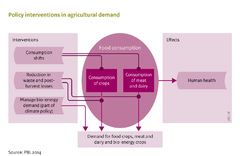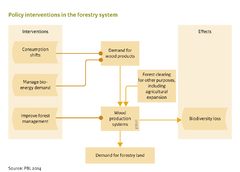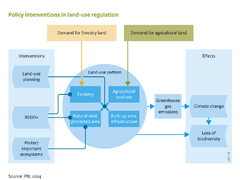Land and biodiversity policies: Difference between revisions
Jump to navigation
Jump to search
m (Copied from Land and biodiversity policies2) |
No edit summary |
||
| Line 1: | Line 1: | ||
{{PolicyResponseComponentTemplate | {{PolicyResponseComponentTemplate | ||
|Application=Roads from Rio+20 (2012) project; Rethinking Biodiversity Strategies (2010) project; The Protein Puzzle (2011) project | |Application=Roads from Rio+20 (2012) project; Rethinking Biodiversity Strategies (2010) project; The Protein Puzzle (2011) project | ||
|Overview=Policy interventions | |Overview=Policy interventions overview; | ||
|KeyReference=PBL, 2010; PBL, 2011; PBL, 2012; | |KeyReference=PBL, 2010; PBL, 2011; PBL, 2012; | ||
|PITable=No | |||
|ISGroup= | |||
|Description=There is a wide range of environmental problems related to agriculture and forestry, such as distorted nutrient balances, biodiversity loss, greenhouse gas emissions from land use and land-use change, soil degradation, and water stress due to agricultural water demand. | |Description=There is a wide range of environmental problems related to agriculture and forestry, such as distorted nutrient balances, biodiversity loss, greenhouse gas emissions from land use and land-use change, soil degradation, and water stress due to agricultural water demand. | ||
Revision as of 11:57, 6 March 2014
| Relevant overviews |
Key policy issues
- How can land-use policies contribute to strategies for halting biodiversity loss and reducing greenhouse gas emissions?
- How can changes in consumption patterns contribute to achieving sustainability goals through changes in land use?
- What are the synergies and trade-offs between halting biodiversity loss, food security, reducing nutrient emissions, and reducing water stress?
Introduction



